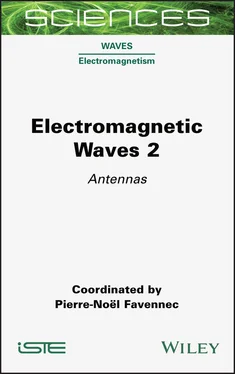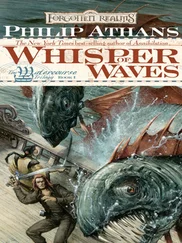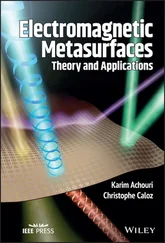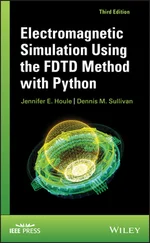1 Cover
2 Title Page SCIENCES Waves, Field Directors – Pierre-Noël Favennec, Frédérique de Fornel Electromagnetism , Subject Head – Pierre-Noël Favennec
3 Copyright First published 2020 in Great Britain and the United States by ISTE Ltd and John Wiley & Sons, Inc. Apart from any fair dealing for the purposes of research or private study, or criticism or review, as permitted under the Copyright, Designs and Patents Act 1988, this publication may only be reproduced, stored or transmitted, in any form or by any means, with the prior permission in writing of the publishers, or in the case of reprographic reproduction in accordance with the terms and licenses issued by the CLA. Enquiries concerning reproduction outside these terms should be sent to the publishers at the undermentioned address: ISTE Ltd 27-37 St George’s Road London SW19 4EU UK www.iste.co.uk John Wiley & Sons, Inc. 111 River Street Hoboken, NJ 07030 USA www.wiley.com © ISTE Ltd 2020 The rights of Pierre-Noël Favennec to be identified as the author of this work have been asserted by him in accordance with the Copyright, Designs and Patents Act 1988. Library of Congress Control Number: 2020937434 British Library Cataloguing-in-Publication Data A CIP record for this book is available from the British Library ISBN 978-1-78945-007-1 ERC code: PE2 Fundamental Constituents of Matter PE2_6 Electromagnetism
4 Preface
5 1 General Information on Antennas 1.1. Definition, context, and regulation 1 1.2. Propagation and radiation 1.3. Antenna and sensor 1.4. Theorems and important principles of electromagnetism 8
6 2 Fundamental Equations Used in Antenna Design 2.1. Formulations of Maxwell’s equations to calculate the radiation of electromagnetic sources 1 2.2. Boundary conditions between two media 6 2.3. Vector potential 7 2.4. Propagation equation for fields  and
and  9 2.5. Solving the Helmholtz equations for the vector and scalar potentials 2.6. Harmonic form of Maxwell’s equations 11 2.7. Physical interpretation of the Poynting theorem 12 2.8. Polarized wave 14 2.9. Calculating the electromagnetic field radiated by an antenna 15 2.10. Aperture antenna 16
9 2.5. Solving the Helmholtz equations for the vector and scalar potentials 2.6. Harmonic form of Maxwell’s equations 11 2.7. Physical interpretation of the Poynting theorem 12 2.8. Polarized wave 14 2.9. Calculating the electromagnetic field radiated by an antenna 15 2.10. Aperture antenna 16
7 3 Different Antenna Technologies 3.1. Horns 1 3.2. Coaxial cables and input guides in antennas 2 3.3. Supply to antennas, reference access, impedance matching and balun 5 3.4. Reflector antennas 6 3.5. Printed antennas 7 3.6. Reference wire antennas 9 3.7. Quality factor and frequency bandwidth 10 3.8. Miniaturization 11
8 4 Characteristic Parameters of an Antenna 4.1. Characteristic parameters of an antenna 1 4.2. Link budget 4.3. Power and noise temperature 3 4.4. Quality factor Q = G/T
9 5 Digital Methods 5.1. Introduction to digital methods 1 5.2. General remarks on EMC methods
10 Appendix 1: Mathematical Formulae 1A1.1. Trigonometric transformation equations A1.2. Series developments
11 Appendix 2: Vector CalculationsA2.1. Vectors in coordinate systems A2.2. Vector operators A2.3. Integral transform theorems A2.4. Fundamental relations
12 Appendix 3: Frequency Spectrum 1A3.1. Introduction A3.2. The different frequency ranges
13 Appendix 4: The DecibelA4.1. Introduction A4.2. Definition A4.3. The different variants A4.4. Decibel operations A4.5. Correlation table A4.6. Particular values
14 Appendix 5: The International Visibility Code
15 List of Acronyms and Constants
16 References
17 List of Authors
18 Index
19 End User License Agreement
1 Preface Figure P.1. A wave bath envisaged by Michel Urien1
2 Chapter 1 Figure 1.1. Total zenith attenuation in free space under clear sky (ITU-R report... Figure 1.2. HF telecommunication antenna (source: Wikipedia) Figure 1.3. a) TV antenna; b) VHF/UHF antenna Figure 1.4. a) Bluetooth dongle; b) omnidirectional Wi-Fi antenna; c) directiona... Figure 1.5. Reflector antennas and new embedded technologies Figure 1.6. Reflector antennas and new embedded technologies (continued) Figure 1.7. Dipole antenna at millimeter frequencies (Houssemeddine et al. 2013) Figure 1.8. Terahertz band Figure 1.9. Three major antenna technologies Figure 1.10. Property of metamaterials (source: Wikipedia) Figure 1.11. Photonic crystals: a) 1D in one dimension; b) 2D in two dimensions;... Figure 1.12. Equivalent circuit in transmission (Thevenin) Figure 1.13. Equivalent circuit in reception (Thevenin) Figure 1.14. The impedance adaptation point according to the bandwidth Figure 1.15. a) Equivalent area for a parabolic antenna; b) equivalent area for ...
3 Chapter 2Figure 2.1. Coordinate system Figure 2.2. Boundary conditions between two dielectric media Figure 2.3. Radiation of a distribution of charges and currents Figure 2.4. Propagation of a linearly polarized plane wave Figure 2.5. Propagation of a) linear polarization; b) circular polarization; c) ...Figure 2.6. Representation of the vector electric field Figure 2.7. Imperfect linear polarization Figure 2.8. Elliptical polarization Figure 2.9. a) Spiral antenna in the L band. Printed lines λ /2 circular polariz...Figure 2.10. Evolution of the EM field on exiting a radiating aperture Figure 2.11. Variation of the Gaussian beam as a function of z Figure 2.12. MQ is the equiphase correction on the sphere to the quadratic term ...Figure 2.13. Radiation pattern as a function of distance from a circular apertur...Figure 2.14. The different zones
4 Chapter 3Figure 3.1. A few examples of horns Figure 3.2. Potter bimode horn Figure 3.3. Example of a coaxial cable to rectangular/circular waveguide transit...Figure 3.4. Base waveguides Figure 3.5. Electric field and magnetic field lines of fc mode in TEM mode Figure 3.6a. Guided and free propagation Figure 3.6b. a) Example of orthomode transduction or OMT; b) corrugated elliptic...Figure 3.7. With a square guide, we can reuse frequencies by orthogonal polariza...Figure 3.8. Example of losses as a function of the a/b ratio above 7 GHz Figure 3.9. Ridged guides Figure 3.10. Basic smooth cylindrical waveguide Figure 3.11. Cutoff frequencies of the first ten modes for a circular guide Figure 3.12. Losses for different modes TEm,n and TMm,n for a guide 5.08 cm in d...Figure 3.13. Field line E for, respectively: a) hybrid mode HE11 for a corrugate...Figure 3.14. a) Reference access for “transmission” or “reception”; b) Reference...Figure 3.15. Principle of a matching device Figure 3.16. Matching device for a cable antenna Figure 3.17. Inductive and capacitive effects depending on the position of irise...Figure 3.18. For a dipole: a) operation of the sleeve balun; b) bazooka or sleev...Figure 3.19. Terrestrial coverage with onboard reflector antennas on satellites:...Figure 3.20a. Cassegrain antenna 13 m in diameter, illuminated by a corrugated h...Figure 3.20b. Radiation patterns in nominal polarization (copolarization) and cr...Figure 3.21. Radiation pattern of an SBFA antenna with diameter 2λ at 1.5 GHz in...Figure 3.22. Basic structure of a printed antenna Figure 3.23. Basic metal PIFA Figure 3.24. Radiation of the patch represented by two slots of width ΔL Figure 3.25. Wide-band structure ( ≈ 30%), multilayer with double polarization Figure 3.26. a) Broadband Vivaldi antenna; b) and c) frequency-independent anten...Figure 3.27. Decreasing antenna size by elongating the current lines by means of...
Читать дальше

 and
and  9 2.5. Solving the Helmholtz equations for the vector and scalar potentials 2.6. Harmonic form of Maxwell’s equations 11 2.7. Physical interpretation of the Poynting theorem 12 2.8. Polarized wave 14 2.9. Calculating the electromagnetic field radiated by an antenna 15 2.10. Aperture antenna 16
9 2.5. Solving the Helmholtz equations for the vector and scalar potentials 2.6. Harmonic form of Maxwell’s equations 11 2.7. Physical interpretation of the Poynting theorem 12 2.8. Polarized wave 14 2.9. Calculating the electromagnetic field radiated by an antenna 15 2.10. Aperture antenna 16










